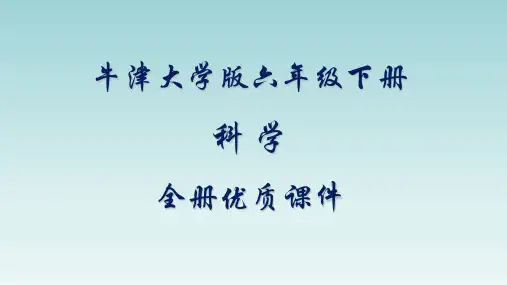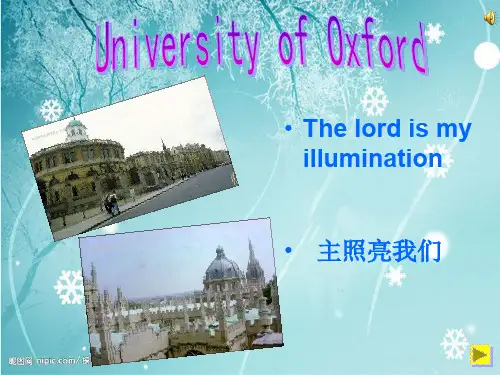《篇牛津大学》PPT课件
- 格式:ppt
- 大小:916.50 KB
- 文档页数:10
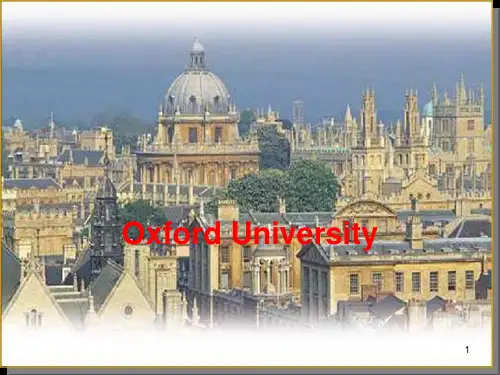
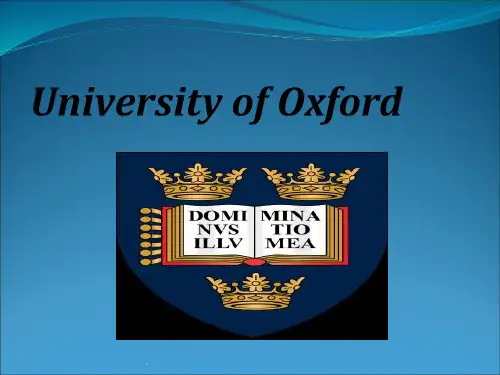

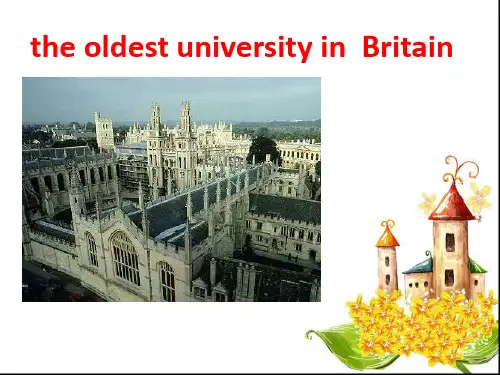
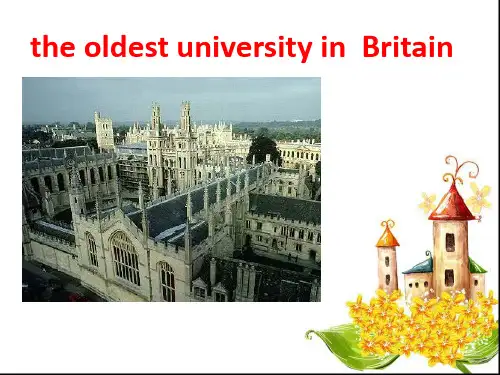
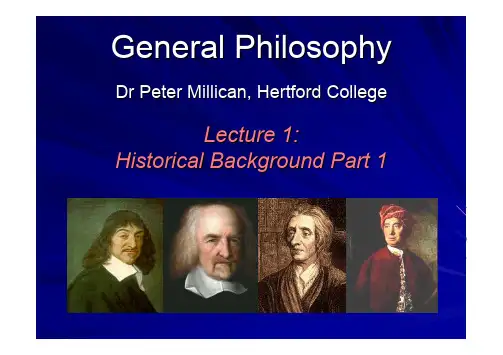
Lecture 1: Historical Background Part 1Some central issues of epistemology Illustrates how philosophy is done: typesHistorical focus: all but one of the topics (Knowledge) are introduced through thephilosophers of theHow the agenda got set: when and why did Learning the labels: “Cartesian dualism”,Great original thinkers, writing for a general audience: so their ideas are profound, and t take too much for granted.Philosophical ideas tend to have broad and Studying classic “battles of ideas” enablesMany classic themes recur throughout the history of thought, sometimes hidden under Ignoring the past can make us slaves of fashion, and blinker us to other options.Scepticism: Descartes’ evil genius, Locke’s veil of perceptionKnowledge: Responding to scepticism Perception: Locke’s representative theory of perception, BerkeleyPrimary and secondary qualities: Boyles criticisms Induction: Hume’s sceptical argument, and his denial that nature is “intelligible”Free Will: Hobbes’ and Hume’s compatibilism, and their naturalistic view of Mind and Body: Descartes’ dualism,Personal Identity: Locke’s attempt toThe ancient Greeks, distinctively,Many different philosophers and “schools”:(335 BC -)Stoics (c. 300 BC -)Roman Empire became Christianised: Plato and Aristotle adopted:Christian Aristotelianism (e.g. Aquinas 1225-74) The Christian Aristotelian worldview became dominant in the medieval monastic schools, hence “Scholasticism”.MercuryMoon FireAirWater& EarthVenusSunMars SaturnFixed StarsAristotle ’s UniverseAncient texts survived in the ByzantinePrinting (invented 1450) gave them much(rediscovered 1417, printed 1486)(translated into Latin 1562)Many factors contributed to WesternThe Reformation added to this crisis:at Westphalia, 1648 led to greater religious toleration.A sceptical problem raised by SextusHow can any criterion of reliable knowledge be chosen, unless we already have somereliable criterion for making that choice?How to know who is right? (Maybe neither?!)Elements and Natural MotionsA Teleological Physics heavenly bodies move in circles, and must beaether .?“Why does water rise up a siphon pipe?”“Why does opiumMolière (1673)Aristotle couldn’t explain:Galileo was reported (by Viviani) to havedropping a large and a small ball together from the Leaning Tower of Pisa. Contrary toAristotle, they fell at similar speeds.The telescope was invented in Holland in What he saw with it refuted Aristotle’sInnumerable stars too dim for the naked eye;Phases of Venus, sometimes “full” (implying that it is then on the opposite side of the Sun).SunVenus EarthVenus as considered by PtolemyAristotelian science was based on Galileo preferred “efficient” causation:inert, remaining in its state of motion or rest unless acted on.The paradigm of efficient causation is via Compared with pseudo-explanationsvacuum, dormitive virtue etc.), this seems:Thus Galileo claimed, against Aristotle:BUT: why then does the Moon orbit the Earth, and the planets orbit the Sun?Attacks Aristotlian tradition Builds on Galileo’sMakes room for mind“essence” radically distinct from matter.Seeks reliable anti-sceptical basis forA perfect God cannot deceive, so our facultiesHence the importance of Descartes’Method.Descartes was a major natural philosopher:His most important intellectual legacy: The ideal of a mechanistic science of the world, based on the simple mathematical properties of extended matter.The real qualities of matter follow from itsextensionpassives) are observer-dependent. Mind is a distinct, active immaterial substance, whose essence is thinking.Since matter’s essence is extension, non-A vortex can explain why the planets orbit theSun without shooting off under inertia.。


